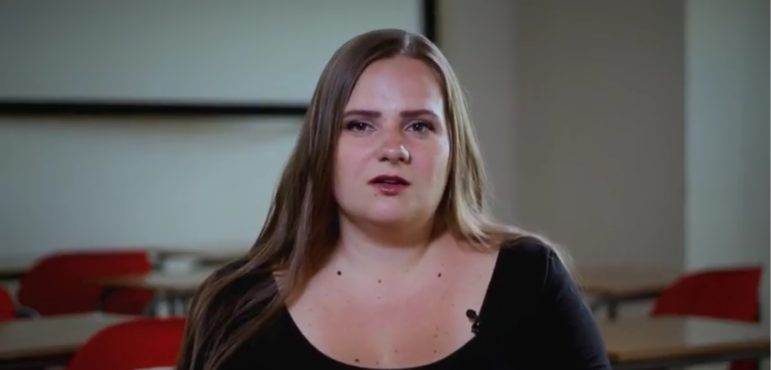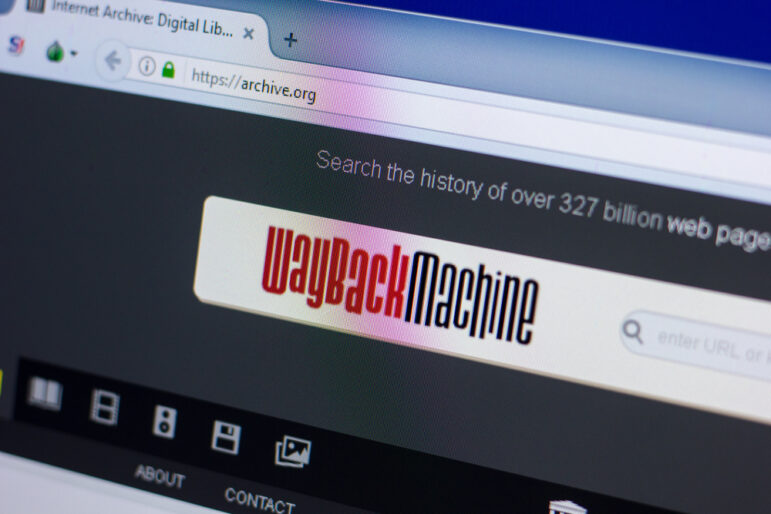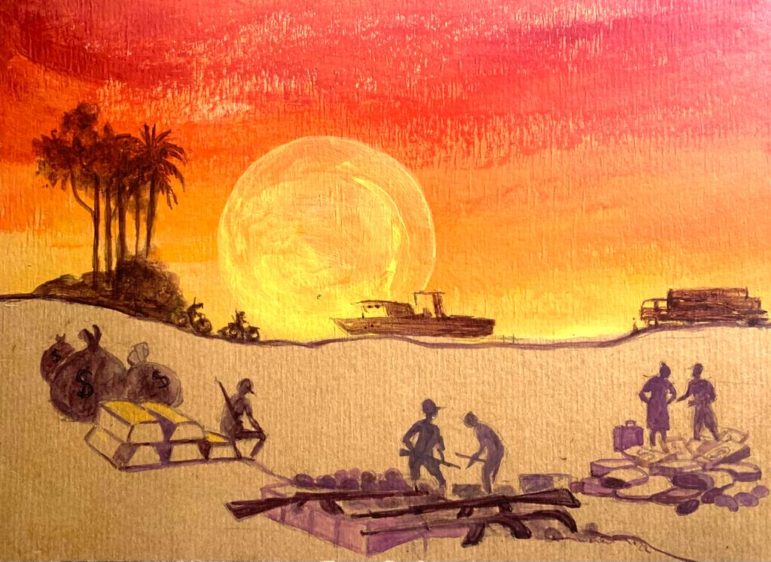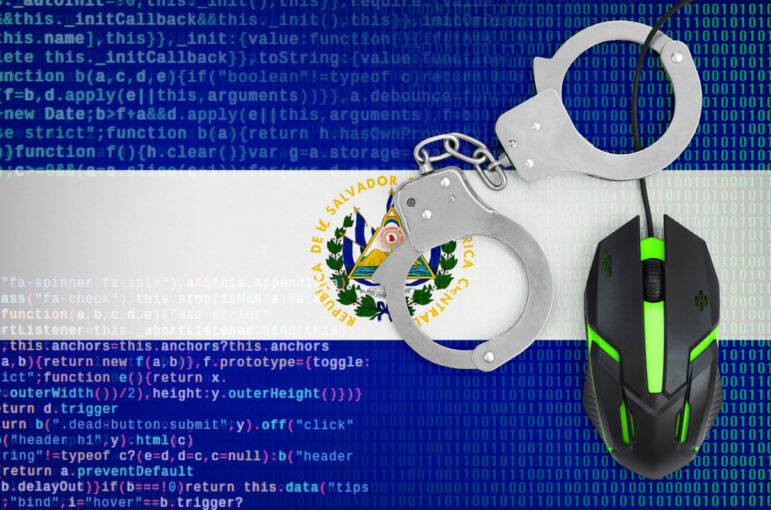

How to Follow the Money: Tips for Cross-border Investigations
Read this article in
বাংলা | Русский|French| العربية

Uncovering Corruption: Miranda Patrucic, an award-winning editor at the OCCRP, shares tips on following money across borders.
Miranda Patrucic is an editor for the Organized Crime and Corruption Reporting Network (OCCRP) and the recipient of the Global Investigative Journalism Network’s 2017 Global Shining Light Award for her work on Making A Killing — an investigation into a $1.2 billion arms pipeline from the Balkans to Syria.
Prior to joining OCCRP, Miranda worked for the Center for Investigative Reporting (CIN) and the BBC in Bosnia. She has led numerous cross-border investigations and successfully uncovered intricate money laundering networks, billion-dollar bribes, and the murky business dealings of oligarchs in Central Asia and Eastern Europe. Her works include The Azerbaijani Laundromat, The Prodigal Daughter, and The Panama Papers.
In this Q&A, Miranda explains how journalists can “follow the money” to uncover stories.
What’s your first move when you get hold of a company’s financial records?
I ask myself three questions: What is in the balance sheet and how did they get it? Where does the money come from? And, what is in the “notes” section?
The balance sheet shows if they own real estate or other companies and whether the initial capital is from shareholder investments, loans or something else. Looking at the “notes” section reveals if the company is trading with others belonging to the same shareholder. This is where the interesting stuff is.
Usually I create a spreadsheet to compare years of financial history to look for jumps in capital. I check to see if the company has huge debts and no income which indicates that they aren’t doing what a legitimate business is supposed to. High receivables are also a red flag.
Petrucic shared more insights into her work at the Global Investigative Journalism Conference in November 2017, after sharing in the Global Shining Light Award.
What can high receivables tell us about a company?
High receivables mean that a company has sold a lot of goods or services, but hasn’t collected payments. Either they’re completely incompetent or they’re doing business with related ventures and taking the money out of the company, and perhaps out of the country.
With shell companies, the real company will take money in the form of a loan from its connected shell and never pay it back.
A lot of corruption in state companies, or state-owned companies that were privatized, involves some level of illicit outflow of capital to related companies. We see this often in industries that have high government subsidies, like mining, where the owner sets up an offshore that buys goods from the local company at below market price or for free, and once the goods are delivered abroad the owner will sell and hide the profit. We see this in the high receivables. The local company then has to be bailed out by the government, often with taxpayers’ money.
What about company assets?
I’m always interested in intangible assets — for example, licenses. I always check their status and the transactions surrounding them – whether a company overpaid for or undersold its license — because corruption often happens here.
Another important thing to look at is if there are linked companies in multiple jurisdictions. I will always go after all the records because things left out in a report in Sweden might have to be disclosed — by law — in the report of the holding company in the Netherlands. Any number that seems too big or too small draws my attention.
Audit reports can also reveal valuable stuff. For example, in the Panama Papers investigation, we were looking into mining companies owned by the daughters of the Azerbaijani president and found that they had an obligation to pay $2 million to the government for the use of a mine, which they failed to do. In the audit report, the managing owners were asked if they feared losing their license, to which the recorded response was no. This lack of regulation eventually helped reveal the favoritism shown to companies connected to the Azerbaijani ruling family.
What other qualitative research is useful for understanding a company’s activities?
Based on initial information on a company, I know whether to check land or business registries, and I always compare annual reports.
In our Tajikistan story, “Lust for Gold,” an annual report stated that there was uncertainty with licensing in the country. The following year, the company was able to get the permit for a mine after a success fee was paid. This gave us an insight into what “success fees” meant, and led to a discovery that such fees didn’t apply to companies owned by or linked to the president’s family.
It’s also useful to look at companies listed on alternative stock markets, like the AIM on the London Stock Exchange, which tend to be less regulated and more tolerant of shadier companies.
Looking at share value can reveal a lot about the function of a company. How do you determine if a company’s shares are undervalued?
It’s difficult to tell. In the Azercell case, we found a document valuing state-held shares at $600 million, and the sale record for $180 million. The difference was significant and we discovered how the state effectively took hundreds of millions of dollars from the Azerbaijani people.
Without a share estimate, you need other qualitative information, like land value or assets. It requires more legwork.
Luck plays a big factor sometimes, doesn’t it?
Yes, for every big story you have to produce a miracle. Sometimes you work hard and get lucky. But, it’s also about not giving up.
We discovered the German Member of Parliament who accepted €100,000 through the Azerbaijani Laundromat because his name was on a bank transfer among hundreds of documents. All we had to do was confirm his identity.
What’s the biggest difference between offshores and locally registered companies?
Offshore jurisdictions often don’t oblige companies to file financial reports, or disclose ownership. Normal things like resolutions and statutes aren’t available. When you don’t have access to leaked documents, it’s difficult. I look for any foreign assets because the local registry requires a higher level of disclosure, and that leads me to information about these offshore companies.
How can journalists effectively use state registries to investigate a company?
In the investigation Unholy Alliances, we looked into a company that owned land together with a known organized crime figure through an offshore company which we couldn’t get any information on. When we checked the local land registry records, there was a letter from lawyers in Panama addressed to the Montenegrin minister of economy at the time. We couldn’t prove he was a shareholder but it showed us that government officials were definitely a part of the story.
Business registries will have all kinds of useful information: details of restructuring, lists of any outside investments or public-private partnerships, and who the company lawyers are.
In the Prodigal Daughter investigation, which looked at the Uzbekistani ruling family, what was the light-bulb moment when you realized that Gulnara Karimova — the eldest daughter of former president Islam Karimov — received over $1 billion in bribes? What tipped you off in the documents?
That was really interesting. We got the leaked documents which revealed transfers from dozens of companies. She made these Telecom companies pay her for marketing services, event planning, transportation or facilitation. She wasn’t providing these services, of course, but it was done this way because there is an ambiguity as to what €5 million worth of marketing services looks like. There is no way to measure it since there is no physical thing to deliver. We saw the money come out on the other side from her offshores. She had people in charge of distributing the money immediately to avoid suspicion by buying real estate and luxury items.
Last question: In an award acceptance speech in 2016 you spoke very candidly about the risks journalists face; any advice for reporters on protecting themselves and their sources?
Be aware. Try to know as early on as possible the gravity of what you’re investigating. We don’t often know how serious a story is or how deep it goes until it’s too late. If you know the topic is dangerous, don’t do it alone! Tell your editor, and ask for help. If you are dealing with a whistleblower, make sure they’re protected too.
 Katarina Sabados is a freelance writer and journalist who has worked with OCCRP and the Crime and Corruption Reporting Network (KRIK) in Serbia. She worked with Miranda on Lust for Gold, an OCCRP investigation into shady mining deals in Tajikistan.
Katarina Sabados is a freelance writer and journalist who has worked with OCCRP and the Crime and Corruption Reporting Network (KRIK) in Serbia. She worked with Miranda on Lust for Gold, an OCCRP investigation into shady mining deals in Tajikistan.







